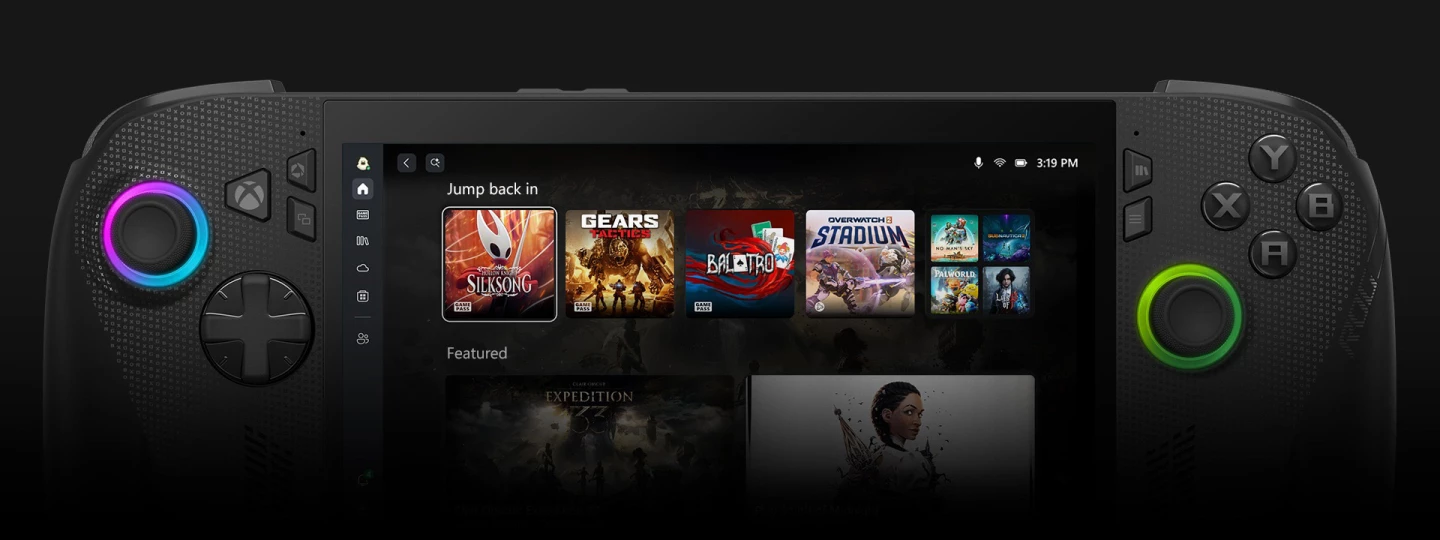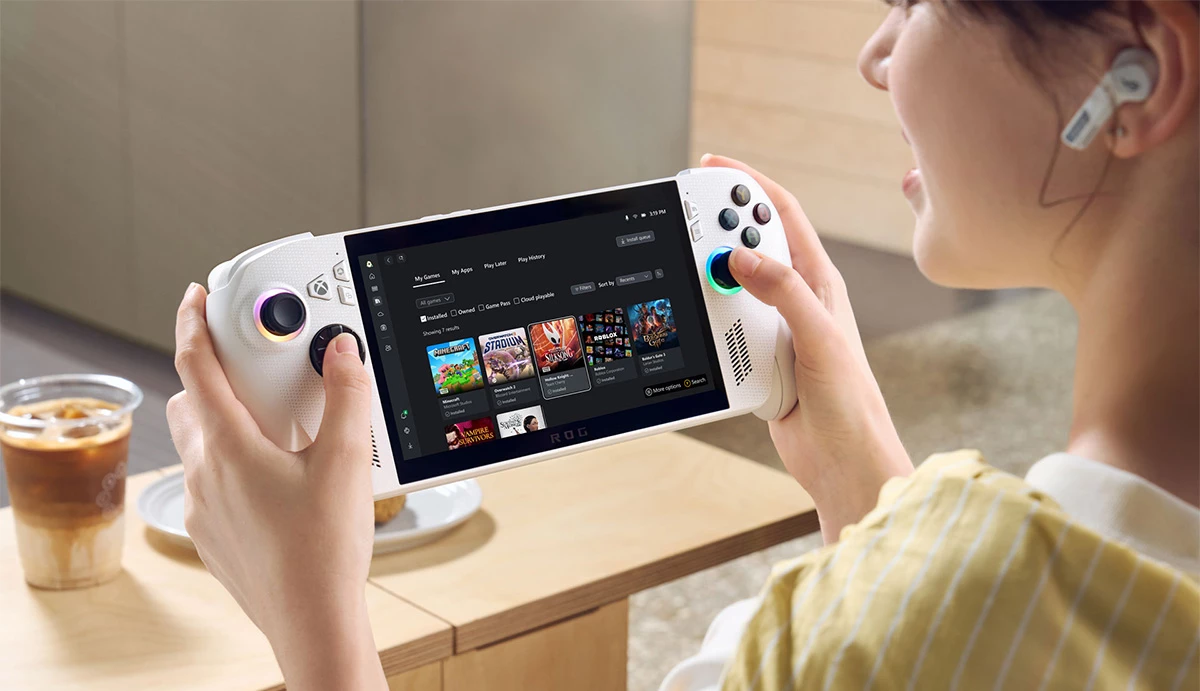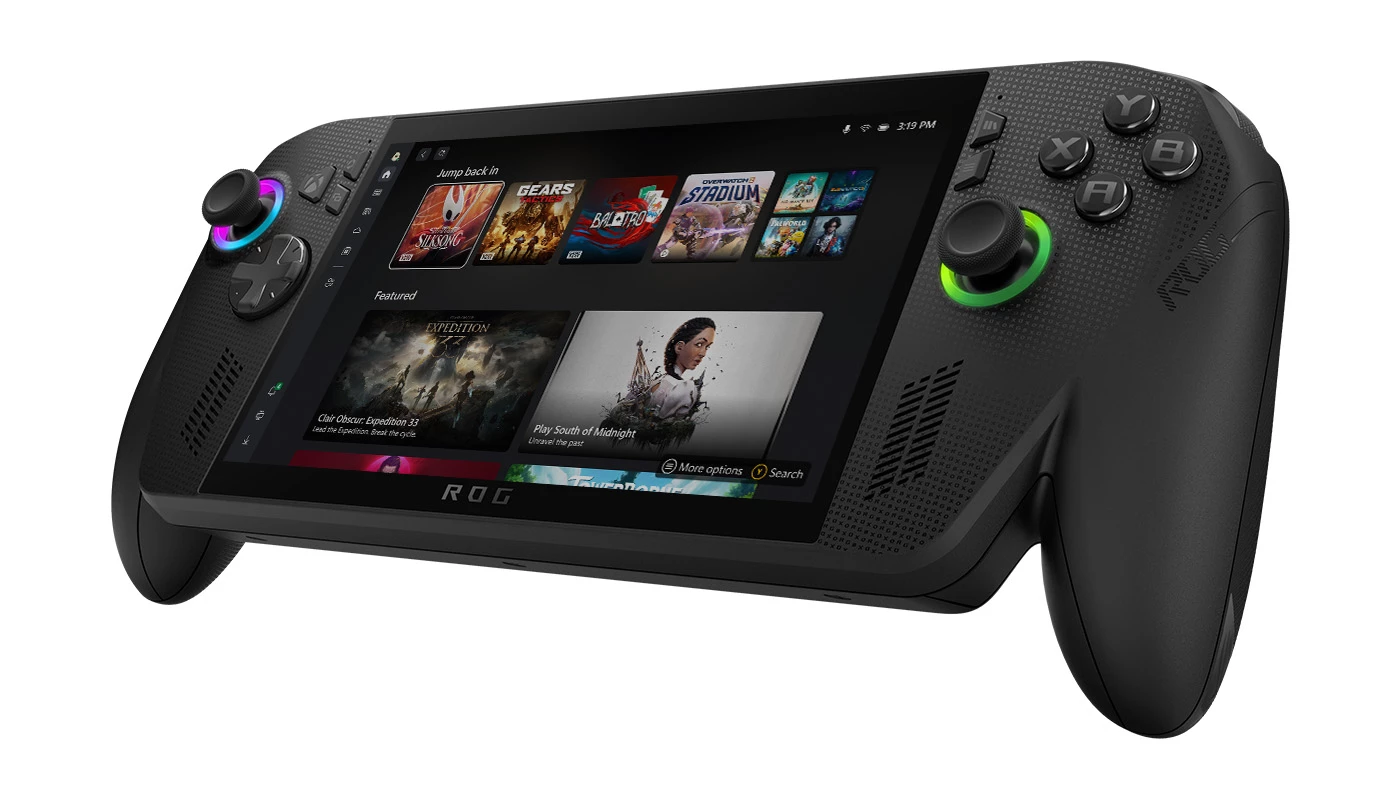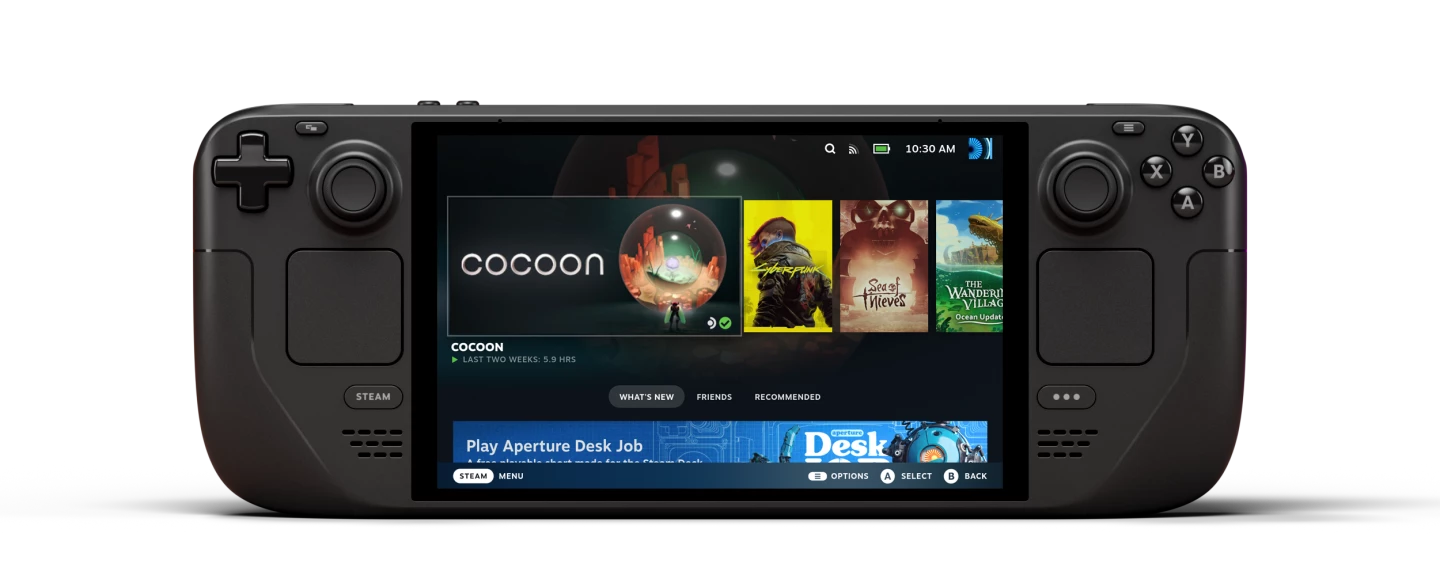Microsoft and Asus just showed off the ROG Xbox Ally and ROG Xbox Ally X, two upcoming handhelds designed to bring your entire PC game library everywhere you go. These beauties feature new hardware and a customized flavor of Windows designed to get you playing instantly.
However, they've been announced just as the market for portable consoles got a whole lot more crowded. Here's a breakdown of what can you look forward to with the new Xbox devices, and how they'll rival the competition when they arrive later this year.
The gear
Both handhelds are built around a 7-inch screen and are basically the same size. The white ROG Xbox Ally, built for 720p gaming, gets the modest AMD Ryzen Z2 A chip, 16 GB of RAM, and 512 GB of storage. The beefier ROG Xbox Ally X is meant for folks who want a bit more performance and graphics fidelity. It comes in black and features an all-new Ryzen AI Z2 Extreme chip, 24 GB of memory, and 1 TB of storage.

YouTuber Dave2D, who spent some time with both devices, says the Ally's processor will likely perform similar to the one powering the Steam Deck, while the Z2 Extreme in the Ally X should be 10%-15% faster. He also noted that the custom OS' standby state is three times more energy efficient than regular Windows, which means you can expect to play a fair bit more play time between charges.
The Ally X gets a slightly larger battery, USB 4 and Thunderbolt output, and Impulse Triggers with haptic feedback. It weighs 1.58 lb (715 g), a bit more than the Ally's 1.48 lb (670 g). Both models get the same 7-inch 1080p display we saw on the original ROG Ally with a 120-Hz refresh rate, and 500 nits of brightness.
The big design detail here is the shape of the console, inspired by the Xbox controller. You'll see that in the grips at the bottom on both sides, as well as the button layout. You'll want to hold this in your hands to see if the ergonomics are comfortable for you.

Pricing hasn't been announced for these two models; you can expect it to be revealed closer to their holiday season launch.
The software
Unlike the Steam Deck which runs Linux-based SteamOS, and other portables from Lenovo, MSI, and Asus that run full-blown Windows, the Xbox handhelds run a heavily modified version of Windows. It skips the desktop interface and turns off other computing processes, and quickly boots straight into the Xbox experience when you power it on.

This includes a shared game library that displays titles from every storefront available on Windows, like Microsoft's Game Pass, Battle.net, and Steam. You can also stream games from your Xbox console or from the cloud.
This interface lets you jump back into games instantly when you power it on. It also supports Game Bar, which displays your hardware performance stats, and lets you chat with friends in an overlay. You'll also carry your achievements over from across your Xbox library, and accessibility options made for Xbox titles will be available on here too.

Because these are essentially still Windows machines, you can run non-game apps like Discord without a fuss.
While it all sounds largely similar to what you'd get with a Windows-based portable like the Lenovo Legion Go, the Xbox handhelds should offer a far more streamlined and player-focused experience, and hopefully improved performance that could potentially come close to SteamOS. The latter has been shown to deliver 75% better performance in some titles. While that won't be the case across every game, we could certainly do with faster frame rates and longer battery life than current Windows-based devices offer.
The complex portable gaming landscape
It's certainly nice to have options, but by the end of 2025, you might find yourself overwhelmed by all the handheld consoles you can choose from – and why you might opt for each type.
You see, there's already the Steam Deck and a slew of Windows-based devices. Soon, you'll find more SteamOS-based models from third-party manufacturers, like Lenovo's Legion Go S. Valve is also making it easy to load SteamOS on other handhelds. So if you were previously choosing between these consoles and brands going by a clear distinction between the experience they offer, that's not going to be the case for long.
Then there's the US$450 Nintendo Switch 2 that just dropped. It's got a lot more power and flexibility for gameplay than the previous model, and its library is expanding well beyond Nintendo franchises to AAA territory like Cyberpunk 2077.
And once Asus' new hardware drops, you'll have Xbox-flavored devices to consider; more devices with this experience will likely follow from other brands later on.
So how do you decide what to go with? I may be oversimplifying, but here are some basic guidelines that should help casual gamers thinking about picking up a handheld sometime this year.
- If you're a fan of the Nintendo universe of franchises and titles, the Switch 2 makes sense because so many of the games for this console are exclusive to it. It's also backward compatible with older Switch games, and you can expect more to come from other studios now that the hardware can support better graphics and mouse-like input.
- If you're into the wider universe of AAA and indie titles from the world of PC gaming, wait for the first Xbox handhelds to drop this holiday season. You can then choose between them to enjoy pretty much any PC game out there.
- If you're keen on getting a handheld before the holidays and aren't super picky about which games you'll play, opt for either the $550 Steam Deck OLED, or the $600 second-gen Lenovo Legion Go S with SteamOS. You'll have access to plenty of titles that already work great, with more games adding SteamOS support regularly.

In light of the options that will become available, it's a little hard to recommend the current crop of Windows-based handhelds, including Asus' own ROG Ally. That's because you'll end up dealing with subpar performance out of the box, courtesy of the bloated OS.
However, if you find a model that you like for the hardware or the form factor (like the powerful MSI Claw 8 AI+ listed at $1,200, or the older Lenovo Legion Go with detachable controllers and a touchscreen), you'll likely be able to install SteamOS on it and eke out more frames per second.
It's worth noting that we don't yet have all the performance and efficiency figures from the new ROG Xbox Ally and Ally X, so we don't know exactly how they'll stack up against the competition. The smart move would be to wait for reviews and comparisons to help inform your buying decision.

As for me, I'm not entirely in love with the look of this duo. While I'm keen to give them a go, I'd rather wait for future Xbox handhelds and keep an eye out for differentiated hardware features like Hall Effect triggers, upgradable storage, and a sleeker design. Hopefully Microsoft will let other brands start cooking up new Xbox-flavored portables soon.
Source: Microsoft







